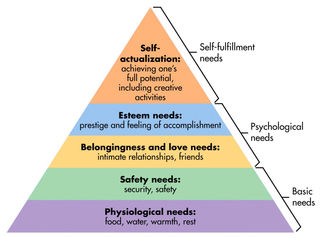7 Ways to Help an Angry Child
It’s tough to know how to help an angry child. But some children—despite their small size—seem to have an endless supply of anger buried inside them.
They grow frustrated easily. They yell. They might even become aggressive. But, they usually blow up over seemingly minor events.
If you’re raising a child whose angry outbursts have become a problem, it’s important to teach him the skills he needs to deal with his feelings in a healthy way. Here are seven ways to help with anger:
1. Teach Your Child About Feelings
Kids are more likely to lash out when they don’t understand their feelings or they’re not able to verbalize them. A child who can’t say, “I’m mad,” may try to show you he’s angry by lashing out. Or a child who isn’t able to explain that he’s sad may misbehave to get your attention.
Help your child learn to identify and label feelings.
Begin teaching your child basic feeling words such as mad, sad, happy, and scared. Label your child’s feelings for him by saying, “It looks like you feel really angry right now.” Over time, he’ll learn to label his emotions himself.
As your child develops a better understanding of his emotions and how to describe them, teach him more sophisticated words such as frustrated, disappointed, worried, and lonely.
2. Create an Anger Thermometer
Anger thermometers are tools that help kids recognize the warning signs that their anger is rising. Draw a large thermometer on a piece of paper. Start at the bottom with a 0 and fill in the numbers up until 10, which should land at the top of the thermometer.
Explain that zero means “no anger at all.” A 5 means “a medium amount of anger,” and 10 means “the most anger ever.”
Talk about what happens to your child’s body at each number on the thermometer. Your child might say he’s smiling when he’s at a level 0 but has a mad face when he reaches level 5 and by the time his anger gets to a level 10, he may describe himself as an angry monster.
Talk about how his body feels when he grows angry. He might feel his face get hot when he’s a level two and he might make fists with his hands when he’s a level seven.
When kids learn to recognize their warning signs, it will help them understand the need to take a break, before their anger explodes at a level 10. Hang the anger thermometer in a prominent location and refer to it by asking, “What level is your anger today?”
3. Develop a Plan to Help Your Child Calm Down
Teach children what to do when they begin to feel angry. Rather than throw blocks when they’re frustrated or hit their sister when they’re annoyed, teach them healthier strategies that help with anger.
Encourage children to put themselves in a time-out when they’re upset. Show them that they don’t need to wait until they make a mistake to go to time-out.
Instead, they can go to their room for a few minutes to calm down when they begin to feel angry.
Encourage them to color, read a book, or engage in another calming activity until they’re calm enough to resume their activity.
You might even create a calm down kit. A kit could include your child’s favorite coloring books and some crayons, a fun book to read, stickers, a favorite toy, or lotion that smells good.
When they’re upset, you can say, “Go get your calm down kit,” and encourage them to take responsibility for calming themselves down.
4. Teach Specific Anger Management Techniques
One of the best ways to help an angry child is to teach specific anger management techniques. Taking deep breaths, for example, can calm your child’s mind and his body when he’s upset. Going for a quick walk, counting to 10, or repeating a helpful phrase might also help.
Teach a variety of other skills, such as impulse control skills and self-discipline. Angry kids need a fair amount of coaching to help them practice those skills when they’re upset.
5. Make Sure Angry Outbursts Aren’t Effective
Sometimes kids exhibit angry outbursts because it’s an effective way to get their needs met. If a child throws a temper tantrum and his parents give him a toy to keep him quiet, he’ll learn that temper tantrums are effective.
Don’t give in to your child to avoid a meltdown. Although that may be easier in the short-term, in the long run giving in will only make behavior problems and aggression worse.
6. Follow Through With Consequences When Necessary
Consistent discipline is necessary to help your child learn that aggression or disrespectful behavior isn’t acceptable. If your child breaks the rules, follow through with a consequence each time.
Time-out or taking away privileges can be effective discipline strategies. If your child breaks something when he’s angry, make him help repair it or make him do chores to help raise money for repairs. Don’t allow him to have his privileges back until he’s repaired the damage.
7. Avoid Violent Media
If your child struggles with aggressive behavior, exposing him to violent TV shows or video games isn’t going to be helpful. Prevent him from witnessing violence and instead, focus on exposing him to books, games, and shows that model healthy conflict resolution skills.


